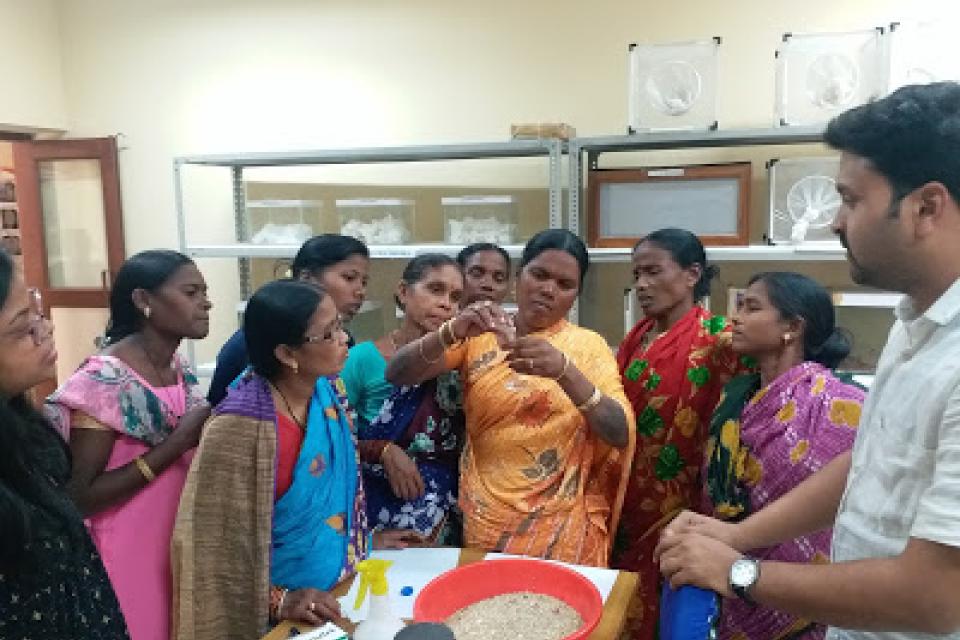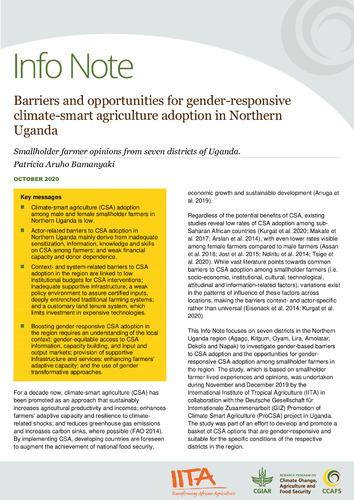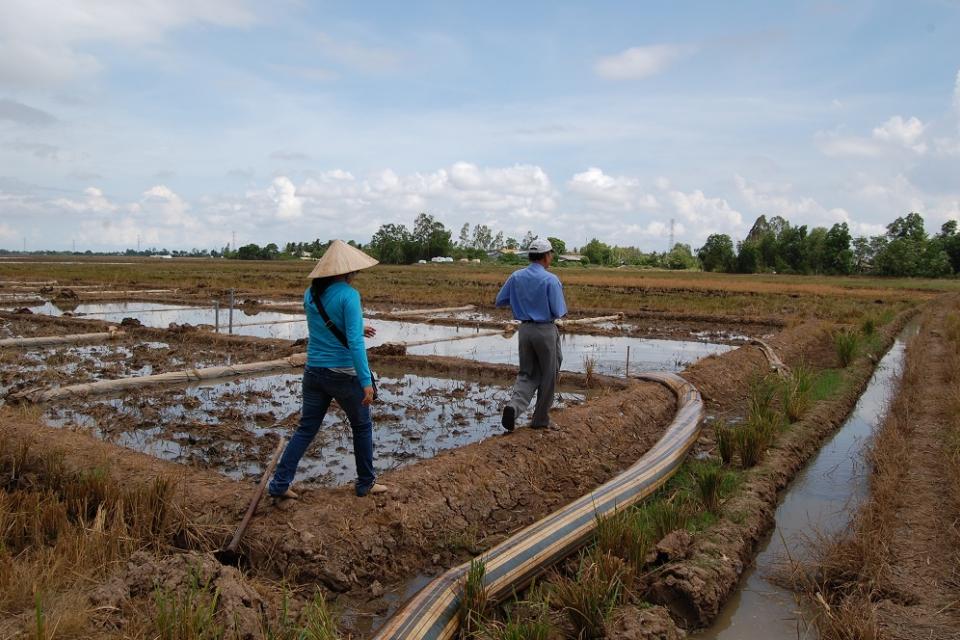Can videos overcome smallholder women’s barriers to accessing climate resilience strategies? Insights from Uganda

Uganda's National Agriculture and Advisory Services (NAADS) has made great contributions to the transformation of the country’s agricultural sector, yet after 21 years in existence, the organization continues to face difficulties in reaching women farmers.
A recent study in Uganda found gendered agricultural productivity gaps of 16% to 60% in favor of men (the wide range due to varying definitions of women’s control over plots). Many factors contribute to this gender gap, including women’s limited access to information, productive resources, and services. It has been particularly difficult to overcome the gendered information gap in smallholder farming communities: Traditional extension services are mostly provided by men—only 11% of Uganda’s extension agents are women—and directed at men, and women have limited access to mobile internet for digital extension (a gender gap of 48%).
Meanwhile, women also need more robust resilience capacities to respond to the growing threats of climate change, including extreme weather, droughts, and other problems. The additional demands placed on women inside and outside their homes further increase their vulnerability to agricultural shocks. And while women undertake large unpaid care workloads, they generally have less household decision-making power than men.
The IFPRI project Reaching Smallholder Women with Information Services and Resilience Strategies to Respond to Climate Change aims to increase women’s climate resilience capacities by overcoming their information constraints. The project—which operates in India, Kenya, and Uganda, and has reached close to 40,000 women—employs short videos showcasing women farmers applying climate-smart agriculture (CSA) practices such as climate-smart pig and poultry management, soil and water management, and integrated pest management. Extension agents organize viewings for rural audiences.


